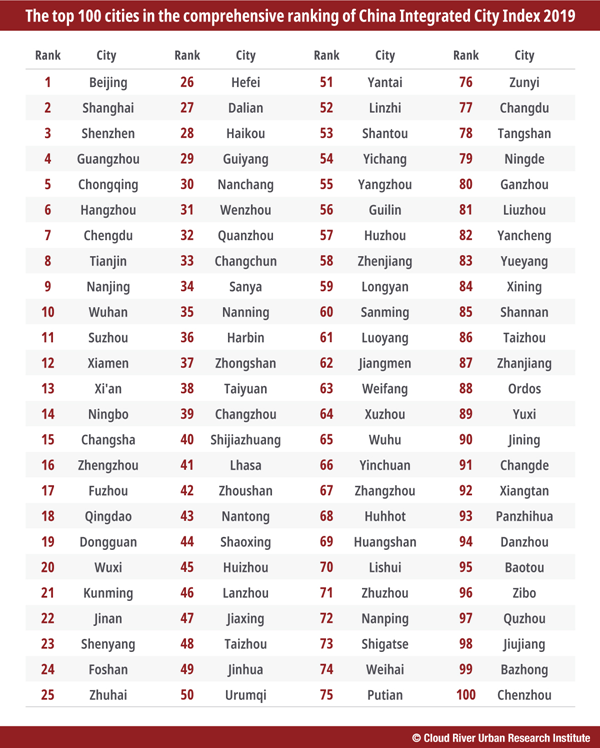China Integrated City Index 2019 ranks 297 Chinese cities
 0 Comment(s)
0 Comment(s) Print
Print E-mail China.org.cn, March 3, 2021
E-mail China.org.cn, March 3, 2021
Zhou Qiren, professor of the National School of Development at Peking University
Competition among cities is a major driving force for elevating urban civilization. The areas that cities compete in are crucial as they determine the future and quality of urban development. History shows, the cities that have chosen the right path and target tend to enjoy sustainable and stronger competitiveness. In this sense, the China Integrated City Index, compiled by Professor Zhou Muzhi and his team, provides reliable statistical foundation for China’s high-quality urban development. It’s like vivid “City Portraits” from which citizens, visitors, entrepreneurs, businesses, investors and other stakeholders can find clues for their living, productions, operations, and business investment. Urban planners, decision-makers and constructors can also rely on this set of data to choose the right target for urban development and make effective urban competition strategies, thus laying a foundation for healthier urban development.

Qiu Xiaohua, vice chair of Cloud River Urban Research Institute, head of the Institute of Economic Research at City University of Macau, and former head of the National Bureau of Statistics
The China Integrated City Index is an important set of indicators, mainly in the following four ways.
First, it’s like a compass that gives the targets and shows the direction navigating future development of the cities.
Second, it’s like a yearbook recording the footprints and depicting major areas of the urban development, which provides various information for officials, scholars and stakeholders of different sectors as they manage or study urban development.
Third, it’s like a “diagnosis” reflecting the conditions of cities’ development within a period of time to help with urban management and urban research.
Fourth, it’s also a report card summarizing achievements in urban development from the statistical perspective. It also offers a sneak peek of the performance of 297 cities over a year.
The China Integrated City Index 2019 has been released. It is an annual review as well as a “physical check” for major cities in China. From the Index, we can see both achievements and setbacks in China’s urban development. The achievements manifest China’s progress in building a moderately prosperous society in all respects, and the setbacks reflect that there are areas we need to pay more attention to in our modernization process. Looking into the future, we need to do an even better job in our strong areas and address the setbacks more efficiently. We expect stable and long-term development as we achieve China’s second centenary goal and create more harmonious relations with the rest of the world.






Go to Forum >>0 Comment(s)